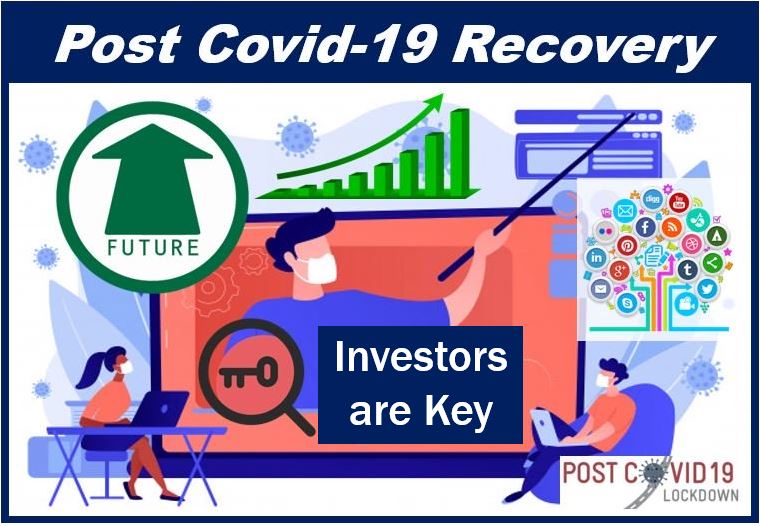Introduction
As the country aims to pull back restrictions put in place during the COVID-19 pandemic, it’s time to spare some thought for what comes after. The crisis has had a marked and demonstrable negative effect on the economies of many different countries.

The subsequent lockdown, in particular, was where most of the damage was introduced. It was a huge blow to manufacturing sectors who saw factory closures and disruptions in the supply chain, all whilst many were stuck at home and had become more reliant on ordering online.
This meant a fall in consumer demand for many businesses that relied on public spaces, whilst those based online saw some increased interest in their products or services but struggled to operate efficiently whilst complying with the new lockdown efforts, placing their entire operations in a stranglehold.
This all meant that many were furloughed, if not laid off outright, and with confidence in the economy slowly declining on both sides of the Atlantic, the GDPs of countries like the USA and the UK witnessed sharp contractions. In the United States, the initial impact of COVID-19 shrank their economy by 4.8%, a more drastic reduction than what had occurred during the 2008 recession.
The continued effect is being compared to the 1930’s Great Depression. In the UK, the GDP crashed by 20.4%, the largest decrease since it started being tracked on a monthly basis, which was in 1997.
With all of this information in mind, it’s time to start repairing the economy and take advantage of the current situation. So, what can investors do to reverse some of this damage and stabilize the economies affected by the COVID-19 pandemic?
Investing After COVID-19
It’s going to be a hard road to recovery, and we can expect that that recovery will take the form of reasonable growth, a slow and steady rise in earnings, and corporate default rate subsidization instead of anything groundbreaking.
Low Inflation
Wages and prices will likely be kept in stagnation due to low inflation, and government bonds will have trouble keeping up with this. Due to the turbulent nature of the pandemic, and how quickly it became a problem for the average person/business owner, we’ll also see households and businesses alike hold onto more liquidity than they normally might.
Whilst the emerging food production and manufacturing markets may see inflation pockets, there’s no guarantee that it will have a marked effect on final prices.
We will say, if you’re an investor focusing on risk reduction after getting burned by COVID, you may want to focus on inflation-protected security investments or commodity exposure.
Private Equity
If you’re looking for the second wind after all of these deflationary circumstances, you should keep an eye on private equity. Multiple organizations have pointed out that private equity is likely to be the highest returning asset class. This is because they’re more well-equipped to deploy capital to encourage that strong return than other areas, having amassed trillions of dry powders.
This speaks to the core of what post-COVID investing will look like. The crisis has knocked many people’s capital, making us all more skittish in our investment decisions but, paradoxically, a strong recovery will require some bold resource distribution to grease the wheels of the economy.
Seeing that the water isn’t as cold as they first thought, the small-time businessmen and investors of the world then jump in and get the ball rolling. The only way out is through, as the saying goes, but risk reduction should still be a priority.
Geopolitical Tensions
We can’t describe the current situation without delving into some politics. As you may know, the recent trade war with China has brought them to the forefront of Western politics.
A growing skepticism over China’s massive presence in Western manufacturing had been taking shape for some time but now, after COVID and with many government figures accusing China of failing to act in the first days of the outbreak, you should expect corporations to diversify their manufacturing and bring supply chains closer to home.
Not all sectors will be affected equally, however, with tech firms seemingly being the most likely. Consider the recent Huawei investigation and the growing anxiety that the Chinese government accesses company data, too, since this will no doubt be a factor in tech firms distancing themselves from the Chinese bloc.
It’s unlikely that tech firms would bring manufacturing back home, though governments will likely pressure private sector businesses into increasing domestic capacity, particularly in areas that need to be self-sufficient like healthcare and med-tech manufacturing.
Mega-Trends

The mega-trends will have only been bolstered by this crisis, so expect them to gain momentum. The lockdown saw an unprecedented amount of people suddenly reliant on virtual means of communication, organization, and even production for those who worked at home.
In line with a digital transformation, expect more services to shift online and the balance between city and country to be disrupted in favor of the country. This itself has exciting ramifications for the real estate industry. The rollout of 5G also adds more incentive for a transition over to electronic communication methods.
Healthcare is the next mega-trend that should be getting more attention in the post-COVID world, but you probably guessed that already. Medical innovation will become important, with both vaccines and medical technology used to mitigate and treat symptoms of viruses like COVID-19. Healthcare will likely get a greater share of funding to inspire this innovation.
It should also be added that the encouragement of onshore production will likely be subject to more stringent environmental criteria. This means that sustainability and carbon reduction should become a focus, given the current attitudes towards climate change and other environmental-based problems, so keep an eye out for ESG investing opportunities.
Conclusion
It’s a precarious position that we’re all in and it’ll take careful but decisive investing to promote recovery from it. Finding the balance between investing with a strong presence whilst slowing down and making surefire investments can be difficult, particularly for those new to the game, so we’d recommend a handy piece that talks about that in more detail, where fellow investor Javad Marandi discusses this balance.
Interesting related article:

